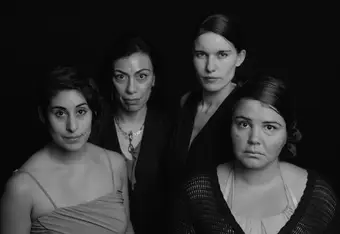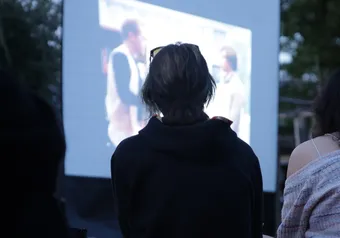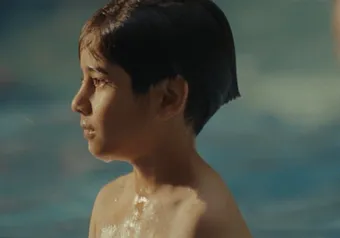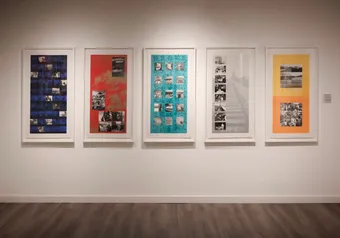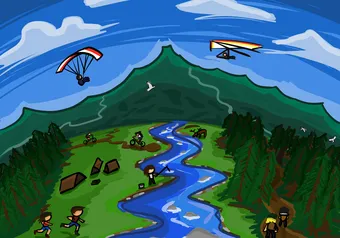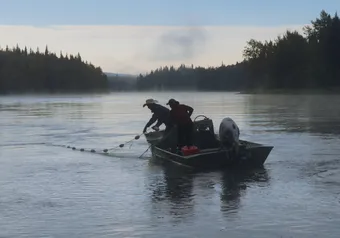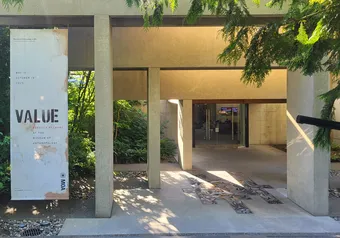The annual Dancing on the Edge festival, a roughly two-week-long series of performances dedicated to advancing contemporary dance in Vancouver, enters its 28th instalment this year. EDGE Four, one of this season’s performances, featured a triple bill of intimate solos and small-group pieces, exploring impactful themes from profound intergenerational loss to personal fortitude in the face of a challenge. The juxtaposition of these works conveyed a sense of gravitas to the audience, involving and uplifting them in a heartfelt exploration that surely conveyed the spirit of the festival.
The first work of the evening, “Mettle,” featured Elya Grant — a graduate of the Modus Operandi contemporary dance program — supported by choreographer and Artistic Director David Raymond in what seemed to be an interpretation of steeling oneself, or at the very least, coming to terms with one’s inner divisions and demons. The choreography used to convey this was raw yet intricate, beautifully transmitted through Ms. Grant’s seamless movement quality, her predilection towards unpredictable patterns of winding and unraveling her body.
Her partnering sections with Mr. Raymond, cloaked in black from head to toe, exuded great creativity, each partner making use of unconventional contact points, such as the head and the crook of the elbow, to direct the other’s weight in uncanny directions. While, out of the three pieces, this may have been the most “traditionally” contemporary thanks to a vocabulary mostly constructed from well-calculated and exaggerated versions of everyday movements, familiar to the contemporary world, it was, in any case, very well-executed.
In “Open Fire,” biography, poetry, dance and other multimedia were interwoven in a unique expression of a dark period in Argentinian history. Local playwright Carmen Aguirre’s narration of the story — in which a woman returns to the place of her mother’s murder forty years — received a physical treatment from the dancers, including choreographer Olivia C. Davies. While watching, one was given room to judge for themselves whether the dancers were following the dictation of the words, or if their physical theatre had become the instigator of the story.
The movement was deep and impressionistic, working with stagecraft to create memorable tableaux, involving both the visual and the aural. Such moments will allow the audience to re-live the emotive gravity brought on by both the subject and the performers’ deeply-felt interpretations.
Finally, “Fighting Chance,” a collaboration between dance-maker Noam Gagnon and Joshua Beamish’s MOVE: the company, received its Vancouver premiere to a standing ovation. Mr. Beamish’s usual vocabulary of eclectic lines and angular extensions was here subsumed under a Rocky-like persona with its accompanying rocking, bobbing and priming-the-self physical mannerisms.
Under the harsh lighting in which every particle of dust and sweat could be seen, Mr. Beamish’s blade-like arm swings, seamless death drops, and the moment he finally lifts his hood and gazes at the audience for the first time with unbridled intensity harkened brightly to a bird testing its wingspan in a dancer’s body, all the while contained by and working through a binding of pedestrian (non-dancer) expression.
In other moments, such as when he runs his hand measuredly through his hair, touching every last strand, Mr. Beamish’s attention to the minute is superb and calls us to pay attention to nuance, even as we attempt to grasp the big picture — namely, the fighter in all of us, thirsting for a challenge.
As a whole, the audience, whether seasoned enthusiast or budding appreciator, was provoked to inspect the conflicting motivations of their own minds through seeing them represented in the medium of dance. Such an agenda seems characteristic of the festival and of the art form, and its provocations should amply serve to leave us thinking until next year’s festival rolls around.
First online
Share this article


